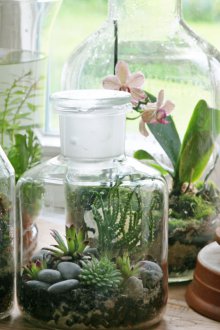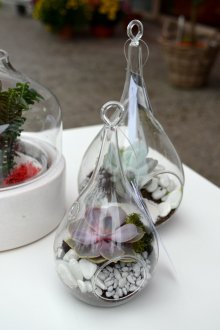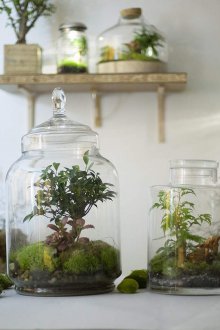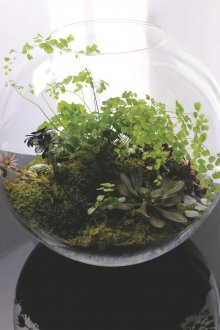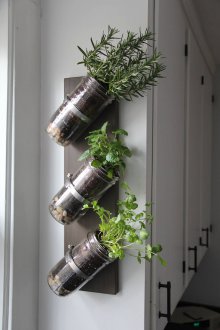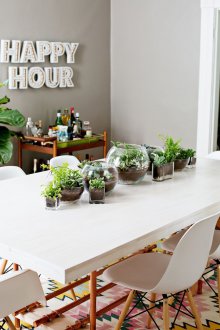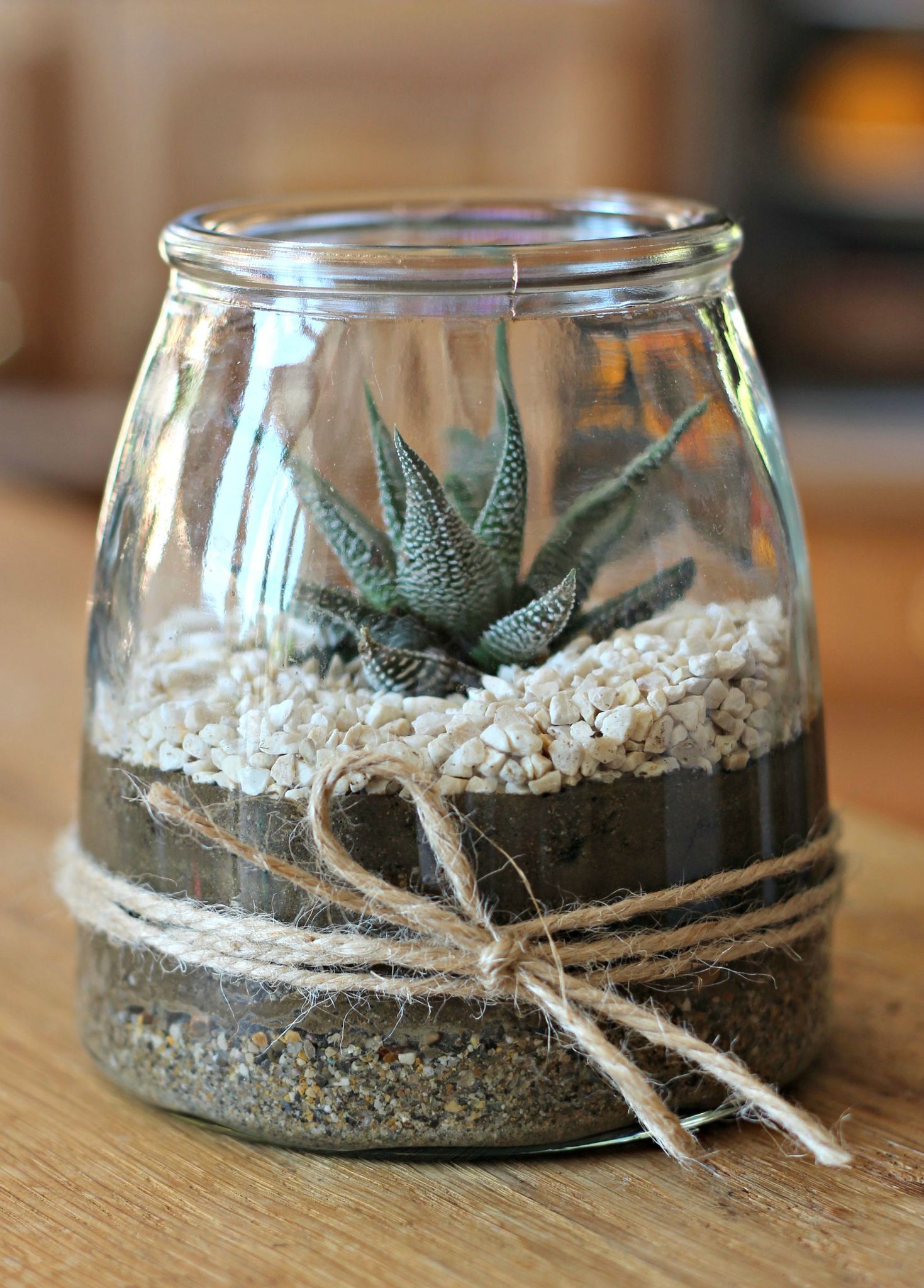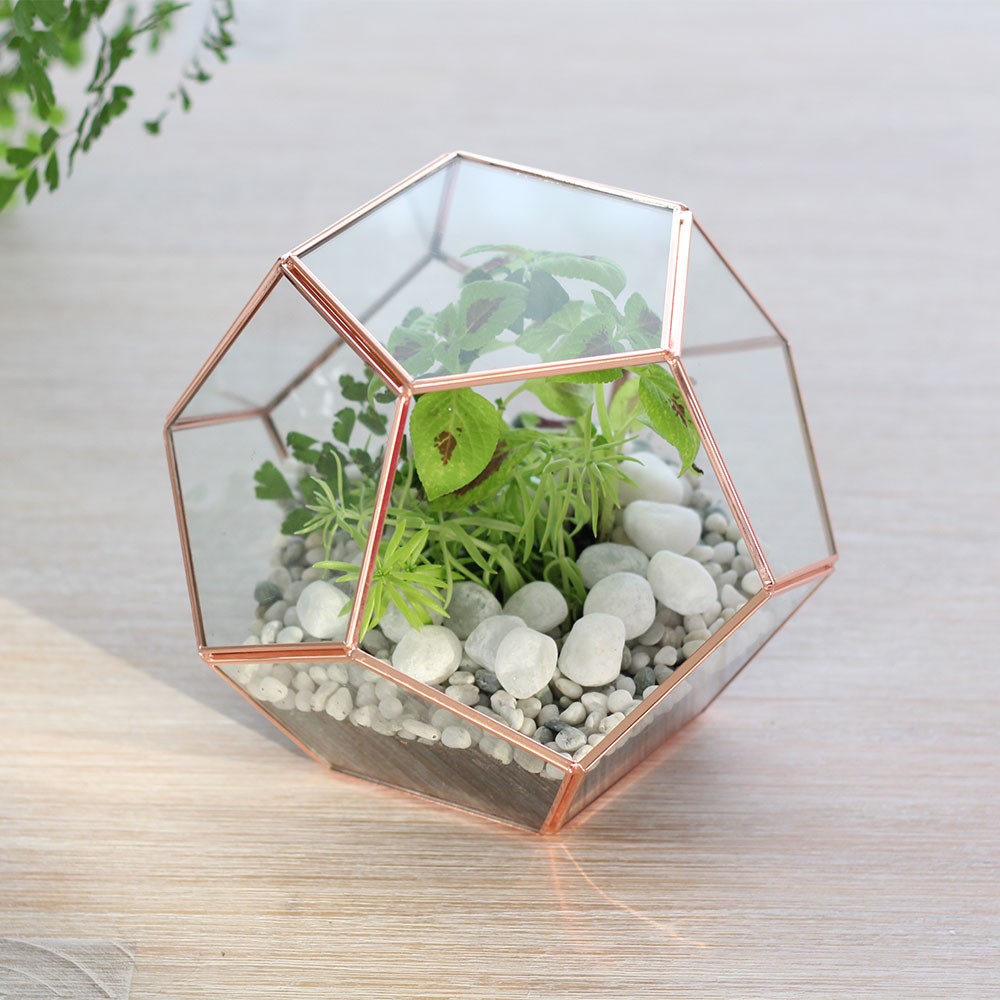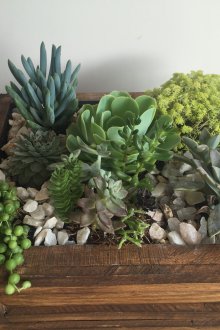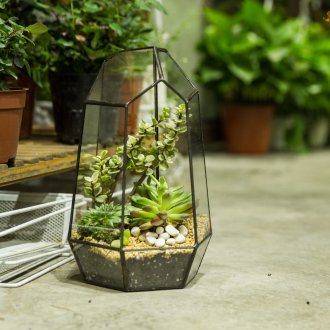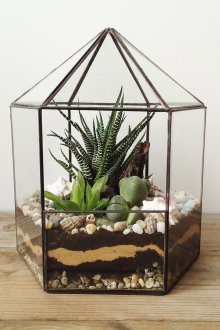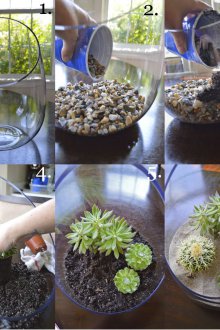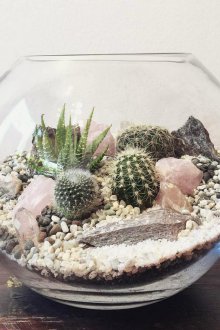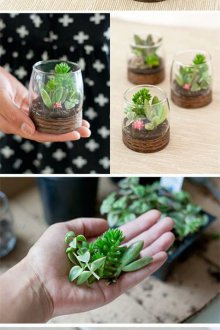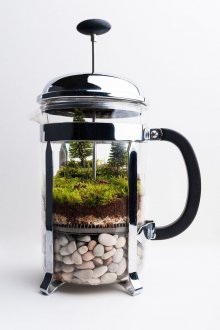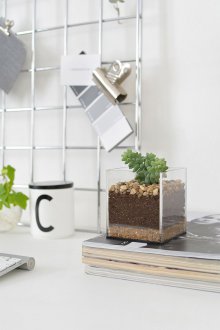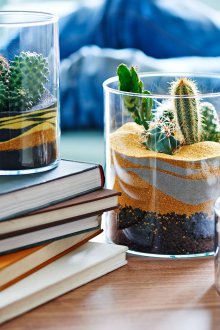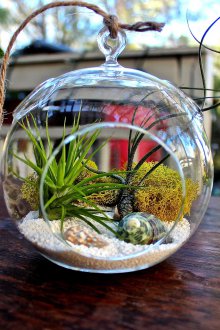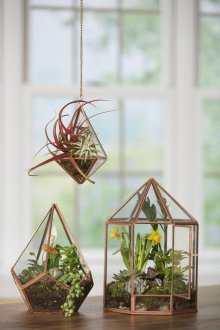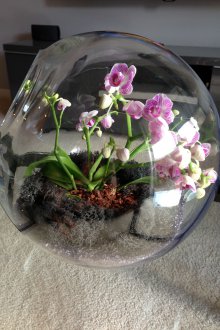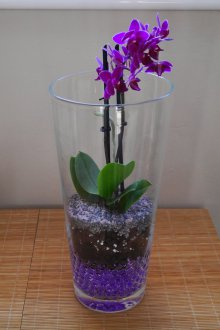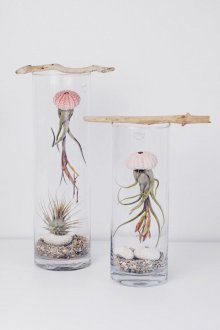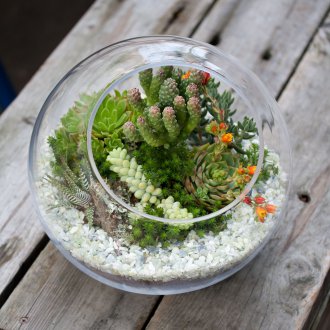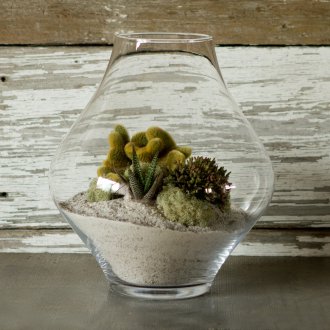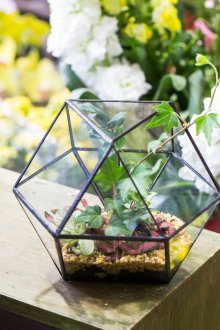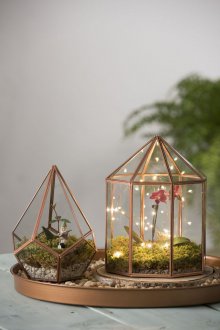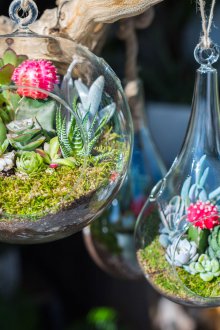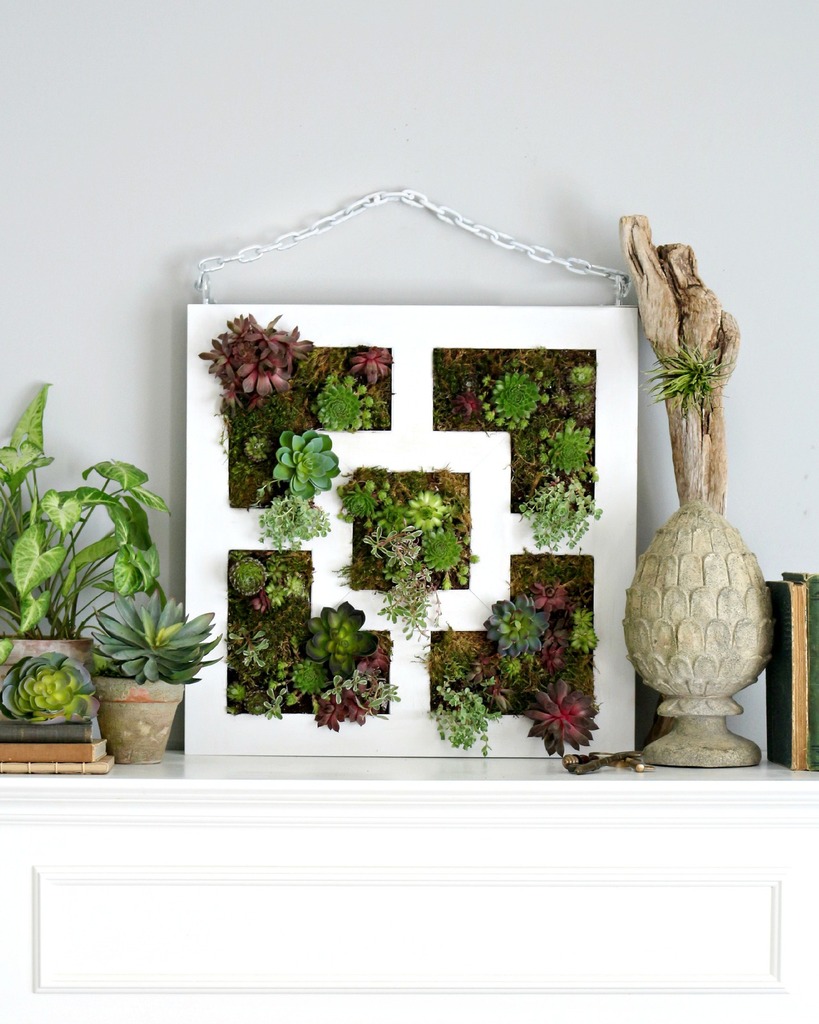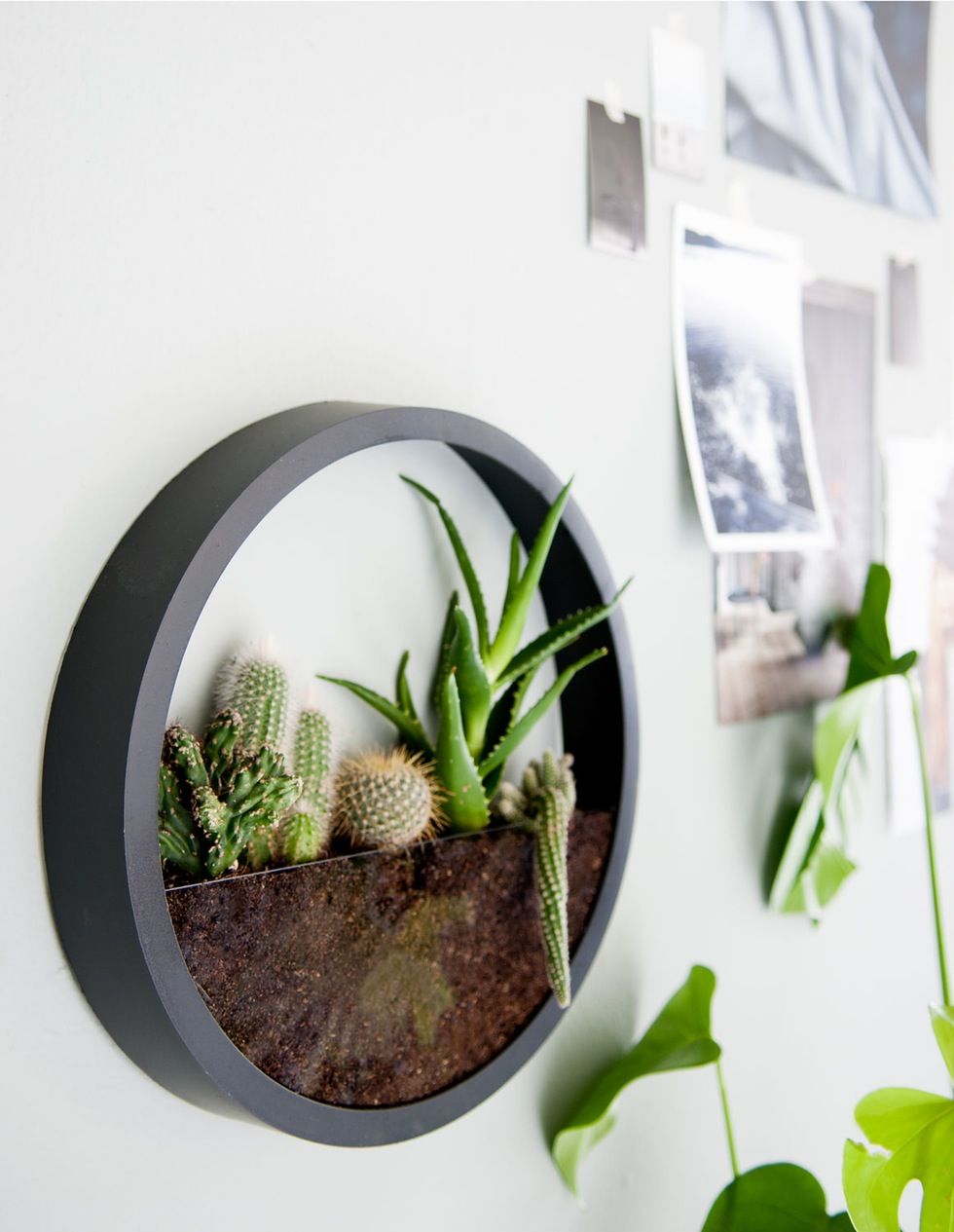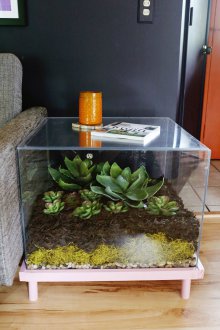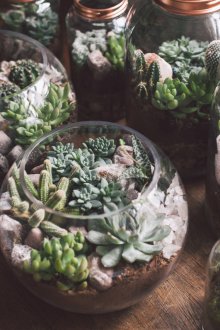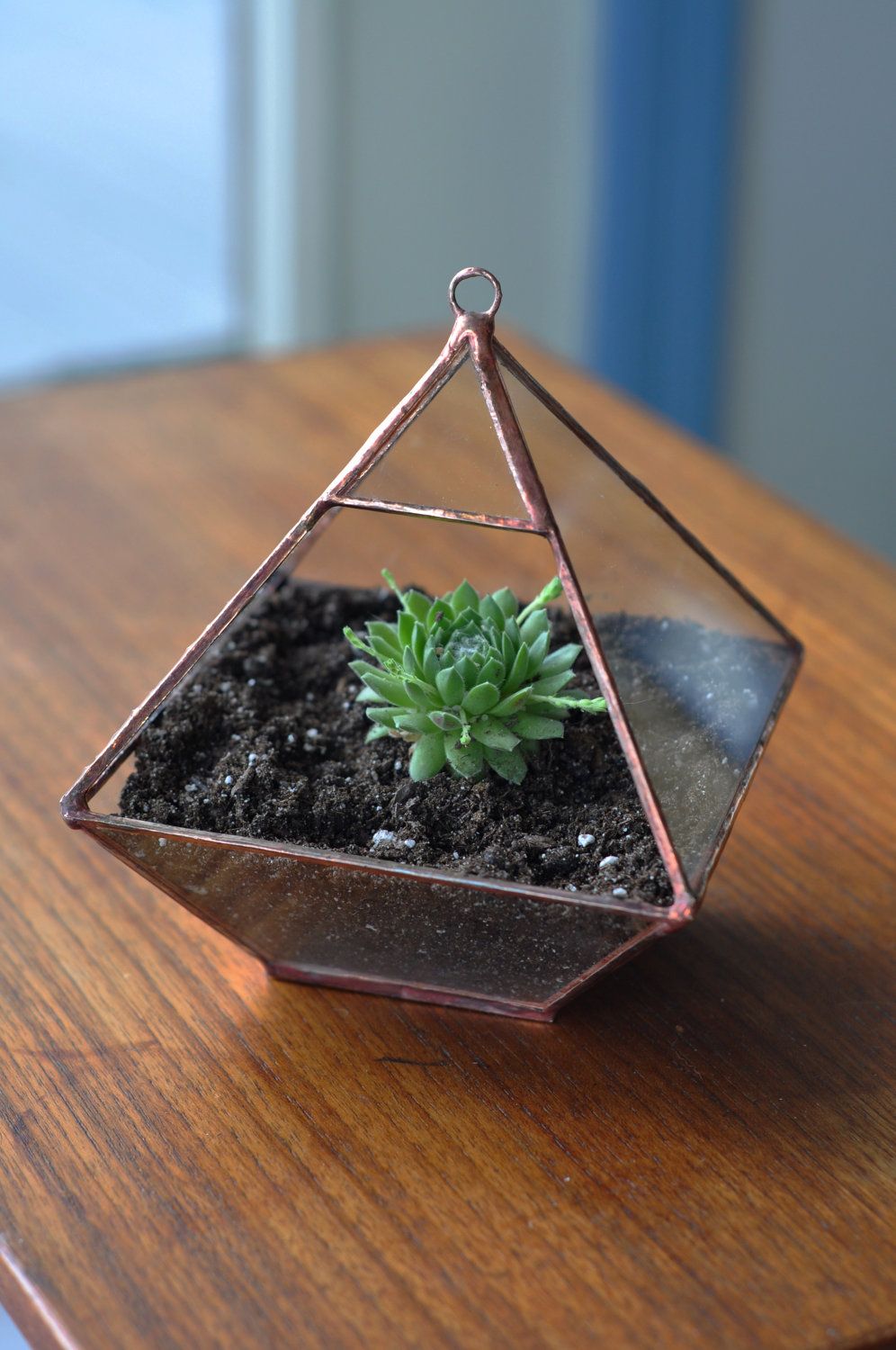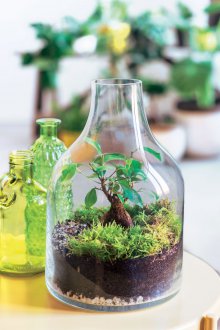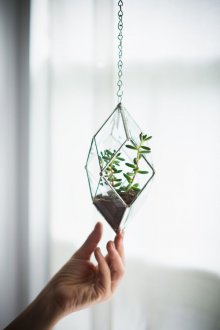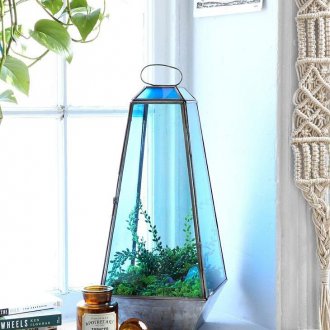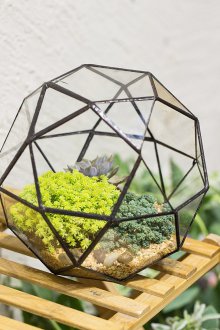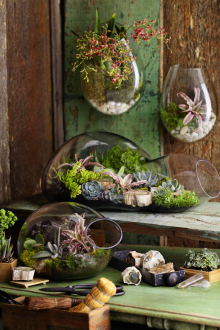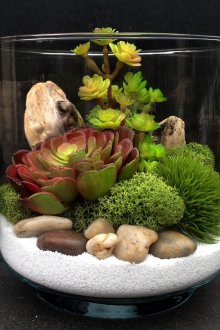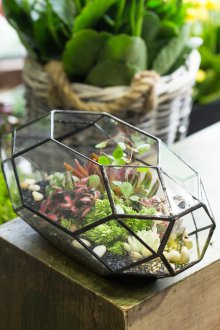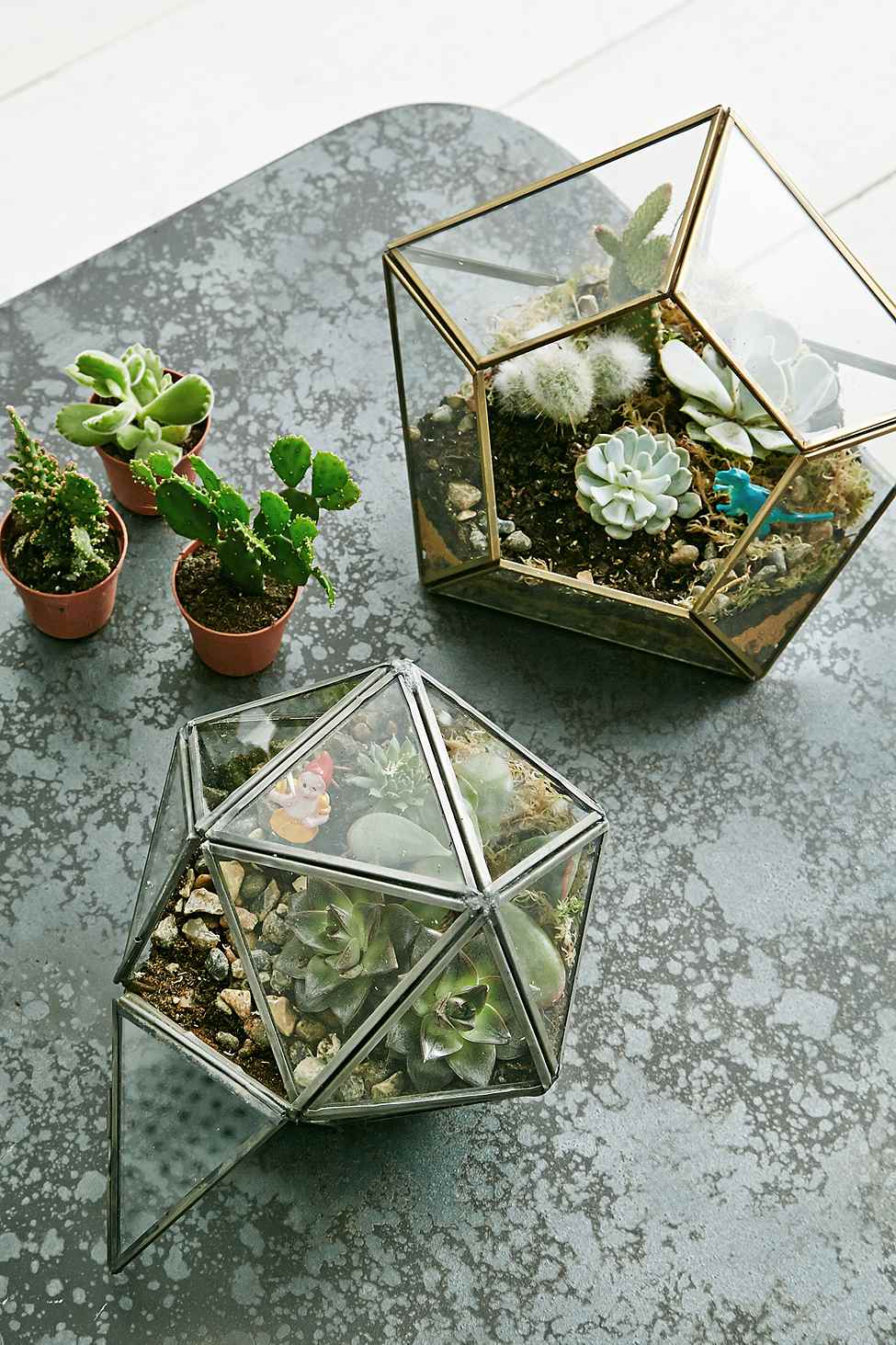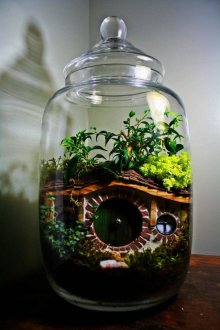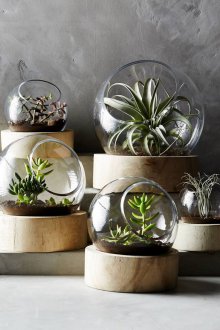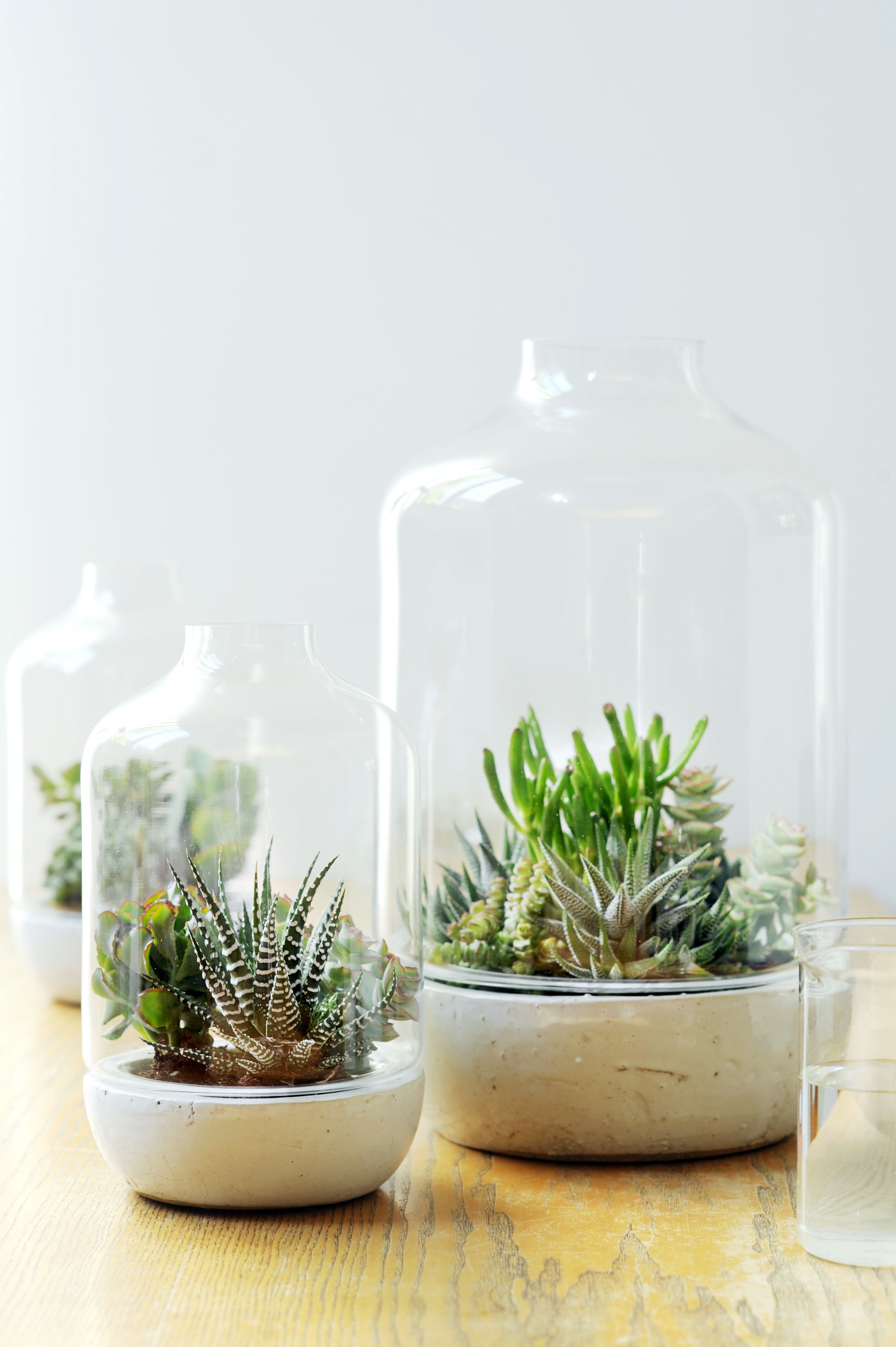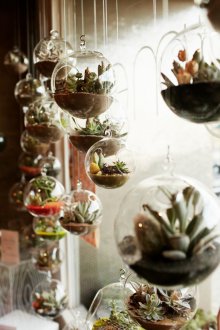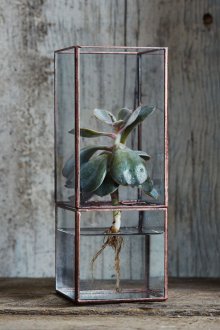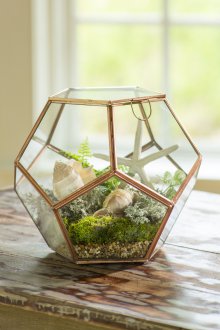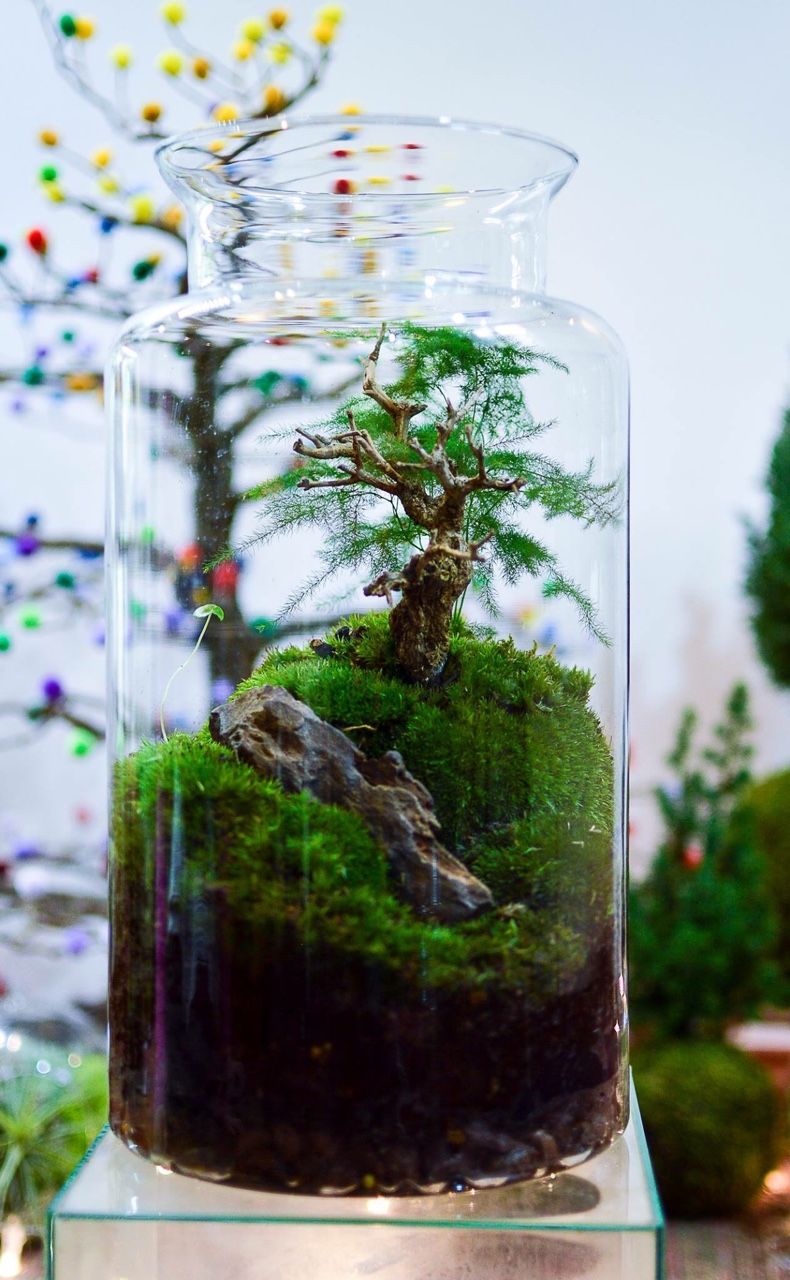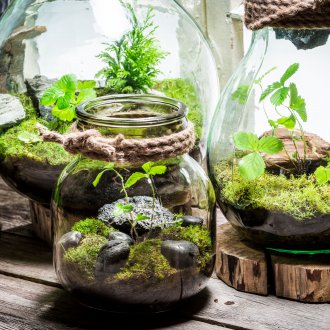Florarium: features of creating a mini-garden behind glass (62 photos)
Content
- 1 Basics of composition
- 2 Types of florariums and their features
- 3 How to arrange a florarium
- 4 Plants for mini-greenhouses
- 5 Cacti and Succulents for Dry Desert Compositions
- 6 Soil for florarium
- 7 Place Selection and Care
- 8 DIY Florarium Ideas
- 9 Florarium in a glass bottle
- 10 Orchid Florarium
- 11 Hanging mini garden
- 12 How to make a do-it-yourself florarium
Florarium - a mini-greenhouse in a glass bowl - a fashionable interior solution among connoisseurs of original compositions from exotic flowers. A miniature garden in a transparent container provides a special ecosystem with an imitation of the natural habitat of selected plants. With the help of florarium, it is easy to create a particle of the natural landscape of mountain plateaus, sultry prairies or the jungle in the interior of a city apartment.
Basics of composition
When making the composition, special attention is paid to such aspects as:
- selection of containers for florarium;
- proper selection of plant components;
- soil composition;
- drainage;
- decorative elements of composition.
It is also necessary to provide adequate lighting and ventilation in order to create comfortable microclimate conditions in the mini-greenhouse.
For florarium use transparent containers of glass or other translucent bases. Special containers are most often produced in the form of a spherical vessel with an opening in the upper part, in some models a lid is provided.
If desired, you can use any suitable utensils, for example, a glass teapot or a jar, a crystal vase, a glass or a decanter. Suitable transparent tanks, containers, aquariums of different configurations.
When designing a mini greenhouse in the glass, plants with similar requirements for environmental conditions are selected. So, representatives of the tropics need high humidity, respond well to spraying. For succulents, it is necessary to create conditions for desert landscapes with a dry and hot climate. Therefore, each of them requires a different soil composition, and the intensity of irrigation also varies.
Types of florariums and their features
There are several types of miniature gardens in a glass vessel.
Composition "Tropics"
The florarium of this category is a beautiful imitation of tropical rainforests with a variety of plants. There is no need to look for rare species of exotic cultures, the image of the jungle can be created with the help of green spaces from flower shops. Having correctly selected plants of different heights with similar requirements for soil and watering, it is not difficult to create an imitation of multi-level selva forests.
Inhabitants of the tropics prefer high humidity. This requires a vessel with a narrowed neck or a small hole with a lid for rare airing. When designing the composition, it is worth introducing a miniature reservoir in the form of a cup of water into it. Also, to maintain a sufficient level of humidity, they use a small snag, after holding it in water.
Composition "Desert"
Florarium with cacti and succulents is the ideal solution in the absence of the possibility of careful care for exotic pets.These representatives of the plant world perfectly tolerate drought, are undemanding to environmental conditions. For the inhabitants of the desert choose an open container, you can use an aquarium or a vase.
Composition "Mountains"
In a florarium with a mountain landscape, plant species are grown from high-mountainous rocky plateaus with a dry climate or forest foothills. In the first case, the inhabitants of semi-deserts and some climbing cultures are relevant, and in the second, representatives of tropical rainforests. The soil for desert residents should be of an appropriate composition with coarse sand; the composition of the forest foothills is characterized by soil saturated with organic matter with high-quality drainage.
To simulate a mountain landscape, stones with sharp edges of various sizes are actively used in the decor. With the help of irregularly shaped rocks, it is easy to create the effect of rocky ledges and peaks surrounded by green spaces.
Composition "Moss"
In nature, bryophytes grow in all climatic zones, usually forming dense clusters in shady places. Mosses love moisture, there are species adapted to dry sunny conditions or common in regions with constant low temperatures. In florariums, this vegetation is often used as a decorative coating of open surface areas under plantations. Moreover, moss can also become the central figure of the composition in the form of a velvety green carpet with little interspersed from other plants or without them.
It is characterized by acidic soil, you can buy a special substrate and lay on top of a layer of ordinary earth. In the florarium with moss, miniature ponds are relevant, it is also important to periodically spray the green coating.
By the type of vessels used, several types of greenhouses are divided:
- Bottle Florarium. This solution includes all varieties of large capacity containers with a narrow neck. Horizontal versions of a rectangular shape and traditional cylindrical configurations on a stand are popular. Vertical variations of bottle greenhouses are relevant when creating compositions with climbing plants and relatively tall crops;
- Aquarium type. The model provides volumetric containers of regular shapes: round tanks, square or rectangular configurations of glass or transparent materials. Most often, the design is an open model;
- Mini-florarium. The composition is created on the basis of small containers. Glasses and vases, flasks and beakers of original shapes, special containers of small sizes for decoration of a miniature garden are relevant.
A separate category of mini-greenhouses in glass is made up of wall and hanging configurations. Wall-mounted forms of florariums most often represent a transparent cap with a base made of plastic or plexiglass, can be in the form of a hemisphere or rectangle. Suspended specimens mainly provide miniature solutions in the form of spherical, oval or drop-shaped structures.
How to arrange a florarium
When choosing plants for florarium, it is worth considering the following recommendations of specialists:
- cultivars suitable for growing in the florarium are those that do not differ in high growth rates and reach a height of no more than 20 cm. The priority is moisture-loving representatives of the flora, who are also not afraid of lighting restrictions;
- Do not get involved and experiment with planting cacti, since not all species of this family feel good in a mini-garden in a glass container. The exception is only some tropical varieties of cacti.
When growing flowering plants in the florarium, good ventilation should be created to eliminate the likelihood of rotting of the petals and stalks after a flowering period. It is necessary to timely remove faded flowers along with fallen foliage.
Plants for mini-greenhouses
The creation of tropic florariums involves the use of the following plant species:
- Mini ferns. Pteris, mnogoryadnik, asplenum and adiantum are planted as key figures in the composition or used as an openwork addition to more densely growing representatives of the tropics;
- Mosses The classic sphagnum is able to create a bright green coating of high density. Other types of bryophytes with unusually beautiful foliage and even species with a metallic tint are also presented in flower shops;
- Crotons. Culture is valued as the most striking in terms of shades and patterns of decorative-deciduous plants for florariums;
- Selaginella. Openwork and dense foliage enchants with a complex structure. The decorative qualities of this beauty from the tropics are fully revealed in the humid environment of a mini greenhouse in glass;
- Orchids Most often, these capricious flowers are grown in the company of relatives or in splendid isolation. Florarium with orchids is called orchidarium, the composition requires the installation of heating and ventilation systems.
In tropical florariums, mini violets, groundcover phytoptonia, mini cyclamen, miniature ivy and rhododendron varieties, gusmania and cryptangus, salinole and creeping ficus are also relevant.
Cacti and Succulents for Dry Desert Compositions
For desert florariums, plants are selected that tolerate dry conditions:
- Cacti Rebucia, prickly pear, notocactus and echinopsis are able to live perfectly in conditions of minimal humidity. They give the composition maximum resemblance to desert landscapes;
- Younger. Stone rose looks great in dry mini-gardens, it is able to survive in the most extreme conditions;
- Echeveria. A classic representative of the Tolstyankov family, succulent fully reveals its charm in the desert florarium;
- Agave. A succulent with an aggressive character and thorns is able to recreate the sultry landscapes of the Mexican prairies;
- Aloe. A variety of decorative species and varieties of this classic succulent allows you to design a wide variety of compositions with hardy and unpretentious plants;
- Adromiscus. The stunted succulent is known for bizarre forms of succulent leaves, the color of which ranges from pale green to purple hues, also there are varieties of brick tonality.
Decorative-deciduous species of Kalanchoe, godson with pea-shaped foliage, malefora, money tree, wild, milkweed and greenery are also suitable for growing in the desert florarium.
Soil for florarium
When choosing soil for plants in a glass mini-greenhouse, it is necessary to take into account the characteristics of crops. In a flower shop, you can buy a ready-made substrate for ferns, if you have to create a tropical flower arrangement. For succulents, special soil compositions with sand and gravel are presented. Fertilizers are not applied to the soil mixtures for the florarium, as this is fraught with the rapid growth of seedlings, which leads to a decrease in the decorativeness of the miniature greenhouse. With independent preparation of the substrate, equal parts of peat, perlite and vermiculite are taken. Coarse sand and fine gravel fractions are added to the succulents composition.
Place Selection and Care
The place for installation of the decorative composition is selected depending on the requirements of the inhabitants of the florarium for lighting conditions. With a shortage of natural light, it is easy to correct the situation with the help of special lighting devices. Plants in the tank are recommended to be planted in a centered manner, placing tall individuals in the middle and small ones around. In this case, when the glass container is periodically rotated with respect to the light source to ensure uniform growth, the decorativeness of the object will always be at its best.
It is worth remembering that succulents require a lot of light, however, direct exposure to the rays must not be allowed to eliminate the risk of burns on the leaves. Representatives of the tropical flora tolerate partial shade well, so a container with ferns can be installed a little further from the window.
Since the own microclimate is maintained in a glass vessel, it is not difficult to create a suitable temperature regime for its inhabitants in the florarium. Humidity is regulated on the basis of watering and spraying. Succulents and cacti are watered once every two weeks, they are not afraid of even prolonged drought, and react negatively to excess moisture. For tropical individuals, frequent spraying and high humidity are favorable. Fertilizing plants in the florarium is not worth it, while it is recommended to change the soil every 2 years.
DIY Florarium Ideas
To create a mini greenhouse with your own hands, you can buy a special container of interesting geometry or use glassware. For example, a florarium in a glass can be a spectacular decoration on your desktop. Succulents live perfectly in an open container, they do not need high humidity. Several types of miniature plants can be planted in a large glass, creating an original flowerbed in glass.
Florarium in a glass bottle
Such a composition is most often created on the basis of the moisture-loving inhabitants of the tropics. Vines, mini-ferns, and bryophytes look spectacularly here. Indoor florarium should be aired periodically to eliminate the risk of mold and mildew.
Orchid Florarium
Perhaps the most beautiful and coveted mini greenhouse in the interior. Fortunately, in flower shops it is not difficult to find a suitable orchid variety with miniature shapes. This beauty from the tropics does not need ordinary soil, instead of soil, bark and beautiful pebbles are used in the container, which gives the composition a special character and color.
Hanging mini garden
A mini-garden in the form of spherical shapes is another bright design element. This form of florarium is distinguished by a comprehensive review, it is popular in the design of interiors of apartments and offices.
How to make a do-it-yourself florarium
To create an interesting art object in the form of a small flower arrangement in a transparent container, it is necessary to prepare the following materials and devices:
- Glass jar. You can buy a special tank for the florarium or use dishes and other glass household items;
- Plants for planting. It is easier for beginners to use succulents;
- Priming. The soil mixture is prepared depending on the type of selected crops;
- Drainage. Use pebbles, expanded clay, broken brick, coarse river sand. A layer of painted decorative sand looks bright and original;
- Decor To decorate the florarium, figures of polystone, glass or plastic are used. It can be a miniature castle or a lighthouse, decorative pebbles, colored sand, figures of exotic animals or mythical creatures;
- Tweezers, stick or spoon;
- Spray gun or syringe for watering and spraying.
Work sequence:
- It is necessary to create good drainage at the bottom of the vessel from the selected materials. It should be remembered that the drainage layer is 1/3 of the soil.
- For a beautiful effect, you can lay a thin layer of colored pebbles on top of the drainage.
- Then pour the soil and wet the composition with a spray gun. With a stick or spoon prepare pits for planting plants.
- Using tweezers if necessary, you need to plant selected crops according to the intended scheme. The soil around the plants should be slightly tamped. Seedlings are watered with a syringe.
Next, decorative elements are placed, the open surface is covered with moss or colored sand. In the end, it is necessary to spray the whole composition with water.
Florariums are popular in the design of interiors of apartments and offices.This interesting art object is capable of captivating with a spectacular look, while the original composition is not difficult to create on your own.
